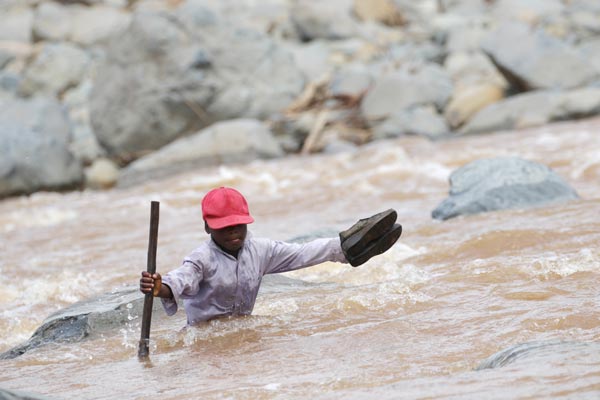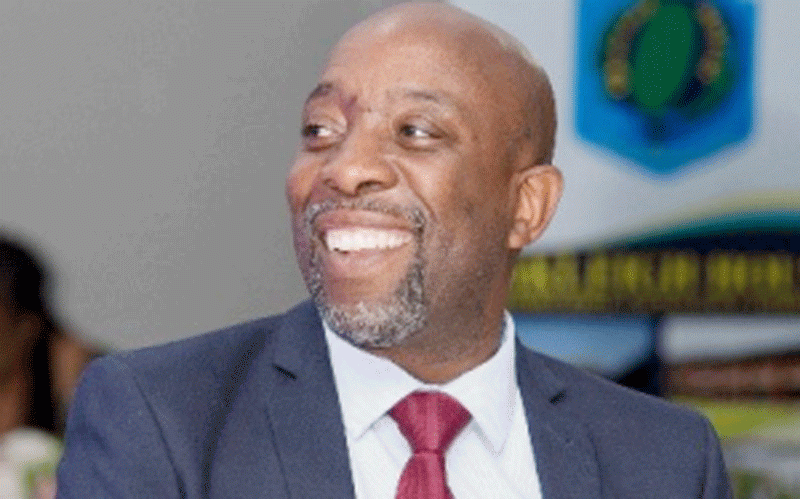

News in depth BY TAPIWA ZIVIRA/ EVERSON MUSHAVA
For three days, 13-year-old Pauline Sithole and 73 other children were sheltered in the same building where bodies of 42 people were being kept at Ngangu Township in Chimanimani.
The township was destroyed by the Cyclone Idai induced storms that killed hundreds of people in Manicaland and left a trail of destruction early this month.
Sithole and her sister had sought shelter at the Roman Catholic Church building, which remained standing after the cyclone swept through the township on March 15.
The church and nearby Ngangu primary and secondary schools eventually became the main assembly points for survivors as the community was cut off from the rest of the world for up to five days.
Roads, electricity and telecommunications infrastructure were destroyed.
Survivors scoured for those who had died and brought them to the church and the schools, where Sithole and others were marooned.
“I had never seen a dead person,” she recalled, closing her eyes for a moment.
- Chamisa under fire over US$120K donation
- Mavhunga puts DeMbare into Chibuku quarterfinals
- Pension funds bet on Cabora Bassa oilfields
- Councils defy govt fire tender directive
Keep Reading
“I would close my eyes, and shield my younger sister each time a body was brought in.
“It still plays in my mind,” she adds, with a whimper.
For Sithole, her nightmare was not about sharing the same building with the dead. Her parents, who live in South Africa — in search of jobs — left her as the head of the house, taking care of her nine-year-old sister who is in Grade Three.
“The first thing that I thought of when it started raining was my sister,” she said.
“Together, we huddled in one corner of our room, but when we heard unusual sounds of boulders sliding down the slope. I knew we had to get out.”
Driven by instinct, and pushed by the responsibility she had assumed over her younger sister for the over three months her parents had been away, Sithole, who is in Grade Seven at Ngangu Primary School, carried her sister to higher ground.
They trudged to safety as rains pounded and boulders the size of a fully grown elephant and tonnes of mud moved from the nearby mountain and destroyed everything, including houses, in their paths.
“It was dark, I could hardly see anything, and I could hear screams all around me.
“My sister held onto me tightly, and within minutes we had reached the shops where there were other people and we spent the night there,” she recounted, her face betraying the trauma she was going through.
“It was only on the following day that we joined others who were going to the Catholic church because we had been told they were taking care of people and it was safe there.
“Although the house wherewe lived did not collapse, it had a huge crack and because all our neighbours’ houses had been destroyed, I was too scared to go back there.”
The chairman of the seven-member cyclone disaster committee set up at the Catholic church to co-ordinate the disaster at community level, Godwin Mundiripo said it was only three days after the disaster that they were able to cross to a cemetery on the other side of Chimanimani to bury the dead.
“We were overwhelmed by both the survivors and the deceased and we had to strike a balance between maintaining the dignity of the deceased and taking care of the survivors. So we used a canvas tent to divide the church so that survivors could sleep on one side, and we stored bodies that were coming in on the other side.
“At that point, it was too early to do any psychosocial support as it was an emergency,” he said.
“So many children were scarred by what happened, and as much as we tried to shield them. It was virtually impossible as some had their parents missing and wanted to know if they were part of the dead people being brought in.”
Outside the camp, the reality of the effects of Cyclone Idai is still haunting many children.
With schools closed for the meantime and the children having to cone to terms with living without familiar faces whom they used to stay with the horror “movies” are still unfolding in their minds.
The children have to bear with watching decomposing bodies being retrieved from the ground every day.
“We are no longer going to school because of the disaster. It was a difficult period for us and we survived by the grace of God. I had never seen a dead person.
“I have now seen many and the images keep coming to me each time I go to bed. I don’t think I will ever be comfortable with rains anymore in my life.
“I don’t think I will forget this disaster,” 14-year Ropafadzo Shongera said in an emotional voice.
Unicef estimates that a total of 250 000 people were affected by the floods in nine districts in east and south of Zimbabwe with Chimanimani and Chipinge being the most affected.
Of these, about 48% of the affected population is under 18 years of age, with an estimated 60 000 children in need of immediate protection services, and 100 000 children in need of welfare and civil registration services.
With such a scenario, Unicef, working with government and partners from eight civil society organisations, namely Childline, World Education International, REPPSI, Child Protection Society, JF Kapnek Trust, Save the Children International, Africa Aid, and Plan International, has since begun coordinating protection services both at national level and in the affected areas.
“We immediately organised partners that we work with on child protection interventions and by Tuesday they were in the affected areas to provide psychosocial support and bereavement support, said Unicef chief of child protection, Jolanda Van Westering.
“In addition, these organisations identify and document separated and unaccompanied children, and create child-friendly spaces that offer safety, security and psychosocial support for affected children, including children with disabilities and those living with HIV and Aids.”
Through Childline, child friendly spaces are set up to create an environment that is friendly to children, particularly in times of emergency, to not only provide them with a place to play and relieve some tension, but to also provide the wide range of services which include psychosocial support, bereavement and trauma counselling, reunification, documentation and any other social protection needs required so they do not fall through the cracks.
Together with her sister, Sithole has since managed to speak with their parents in South Africa over the phone as part of the counselling process.
As part of their daily routine, the 73 children who have been living at the church since the disaster, get lessons from a volunteer teacher.










